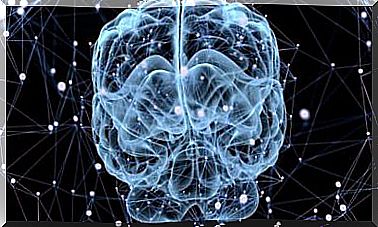The Icnertus Nucleus In Ingestion And Addictions

Alcohol addiction is related to mechanisms of eating behavior, which are also influenced by levels of stress or anxiety. When these mechanisms are deregulated is when the pathology occurs. To date, the exact neurobiological bases of the process are not known, but the nucleus icnertus has been identified as a common brain area.
This region is found in the brain stem, specifically in the pontine tegmentum. In addition, it modulates the activity of other brain areas such as the hippocampus, septum, amygdala or hippocampus. These areas are involved in memory processes, emotions, and the brain’s reward system. Let’s see more about it.
The nucleus icnertus and relaxin
What has led to a common point between addiction and eating disorders is the involvement of the nucleus icnertus. Specifically, from relaxin-3, a neuropeptide almost exclusive to icnertus. This is expressed in several regions related to the regulation of corticotropin (CRF) and vasopressin or oxytocin, regulators of physiological stress.
These receptors, their neurons and their information pathways have been mainly studied in rodents and macaques. However, these findings are being relevant in terms of their relationship with stress, anxiety, eating behavior and alcohol addiction.
Relationship with eating behavior
Emotional, social, genetic and neurometabolic factors are involved in eating disorders (ED). Thus, they are produced, or are the product, of alterations in brain circuits and structures, as well as in metabolic and neuropeptide mechanisms. In addition, dysregulations of stress responses and reward pathways occur.
In this sense, relaxin and the icnertus nucleus are associated with the reward system, emotions and eating behavior, since the activation of the relaxin receptor (RXFP3) stimulates appetite. Therefore, the interest in studying it in relation to eating disorders (ED) and its potential for developing interventions is enormous.
It appears that relaxin-3 promotes an increase in food and water intake and, consequently, in body weight. This is especially the case in situations where stress levels are high, such as binge eating syndrome. This has been observed in laboratory rats, in which, after being subjected to a stressful situation, they compulsively increased their intake of sucrose.
In addition, this type of disorder is based on a neurophysiological pattern in which the dopamine and opioid mechanisms in the brain’s reward system are altered. Thus, this would explain the high incidence of eating disorders in which a substance use disorder also occurs. This fact has also been observed in rats, in which high levels of RLN3 were associated with a higher consumption of ethanol and sugar.
Relationship with addictions
Addictive behaviors are defined as pathologies of the central nervous system due to a neurobiological alteration of brain structures and neural circuits involved in motivation and behavior. Among them is the reward system, by which a substance generates a pleasant response to which the brain quickly gets used to.
This activation, and consequent response, causes brain changes that affect neuropeptides and their receptors, which remain even after detoxification. Among them is RLN3, which seems to regulate the reward produced by alcohol consumption. This has been seen in studies with rats, in which levels of the peptide were positively associated with the amount of daily alcohol intake.
As in the case of eating behavior, it is seen that the mechanism of the nucleus icnertus and addictions is related to periods of stress. Thus, exposure to a stressful situation had direct effects on alcohol consumption in mice, being more significant during the presence of stress and afterwards.
Future Advances
The studies that have been carried out so far have been with animal samples, so it is not completely extrapolated to humans. This means that what is known about the mechanism between the nucleus icnertus, EDs, and addictions is not extensive enough. However, it has opened up a very broad field of research.
This path could lead to the development of new target treatments that act directly on the mechanisms related to compulsive behaviors of food or alcohol intake. As well as other more specific drugs that treat comorbidity or the neurogenic stress components that exist in both.








